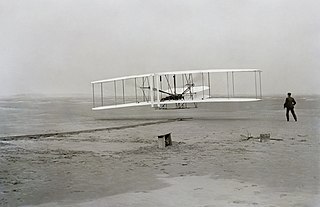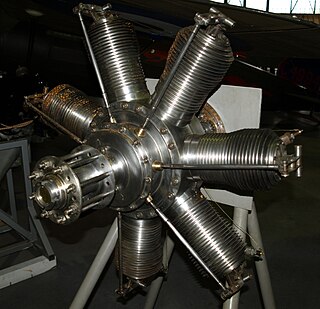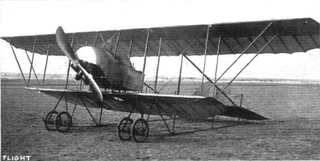Design and development
The aircraft was a pusher biplane with a square section nacelle mounted between the upper and lower wings, which were of two-spar construction, the spars being ash I-sections. To maintain the leading edge section there were half-ribs between each rib, these extending from the leading edge to the main spar. A single horizontal tailplane with a split elevator and a rudder divided into two part, half above and half below the tailplane, were carried on ash booms behind the wing, the booms being connected by hollow wooden vertical struts and tubular steel horizontal members. The booms were spindled to an I-section except at the points of attachment of the cross-members. [2] The upper wing was double the span of the lower and had wide-span ailerons occupying the whole trailing edge outboard of the tail booms. The wings were connected by a single pair of struts on either side, the outer section of the upper wing being braced by wires leading to inverted-V kingposts. The wide-track undercarriage consisted of a pair of long laminated wood skids each bearing pair of wheels on a short axle. No tailskid was fitted.

In a vehicle with a pusher configuration, the propeller(s) are mounted behind their respective engine(s). According to British aviation author Bill Gunston, a "pusher propeller" is one mounted behind the engine, so that the drive shaft is in compression.

A nacelle is a housing, separate from the fuselage, that holds engines, fuel, or equipment on an aircraft. In some cases—for instance in the typical "Farman" type "pusher" aircraft, or the World War II-era P-38 Lightning—an aircraft's cockpit may also be housed in a nacelle, which essentially fills the function of a conventional fuselage. The covering is typically aerodynamically shaped.

Fraxinus, English name ash, is a genus of flowering plants in the olive and lilac family, Oleaceae. It contains 45–65 species of usually medium to large trees, mostly deciduous, though a few subtropical species are evergreen. The genus is widespread across much of Europe, Asia, and North America.
The Type VII was built in both single and two seat versions and some were fitted with the 50 hp (37 kW) Gnome Omega engine, which would have increased the price considerably as well as improving performance, since this engine cost around £500.

The Gnome 7 Omega is a French seven-cylinder, air-cooled aero engine produced by Gnome et Rhône. It was shown at the Paris Aero Salon held in December 1908 and was first flown in 1909. It was the world's first aviation rotary engine produced in quantity. Its introduction revolutionized the aviation industry and it was used by many early aircraft. It produced 50 horsepower (37 kW) from its capacity of 8 litres. A Gnome Omega engine powers the 1912 Blackburn Monoplane, owned and operated by the Shuttleworth Collection, the oldest known airworthy British-designed aeroplane worldwide. A two-row version of the same engine was also produced, known as the Gnome 14 Omega-Omega or Gnome 100 hp. The prototype Omega engine still exists, and is on display at the United States' National Air and Space Museum.













